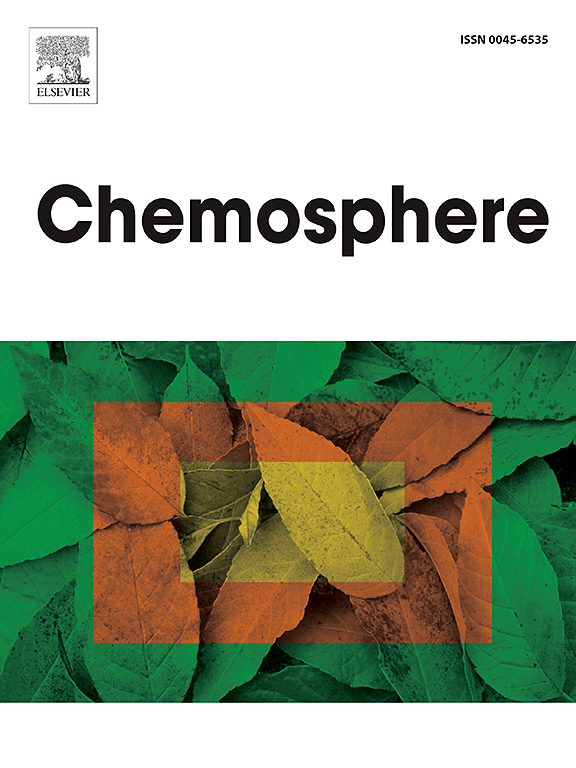Environmental risk assessment of selective serotonin reuptake inhibitors (SSRIs) after COVID-19 pandemic: a systematic review
IF 8.1
2区 环境科学与生态学
Q1 ENVIRONMENTAL SCIENCES
引用次数: 0
Abstract
Nearly 4 % of people worldwide struggle with depression. This mental illness significantly affects daily functioning, and its treatment typically involves long-term pharmacotherapy combined with psychotherapy. Following the COVID-19 pandemic in 2019, the number of individuals suffering from depression increased substantially. One of the most commonly prescribed classes of antidepressants is selective serotonin reuptake inhibitors (SSRIs), such as citalopram, fluoxetine, fluvoxamine, paroxetine, and sertraline. These compounds are detected in the environment, sometimes in considerable concentrations. For instance, fluvoxamine was found in surface waters at levels up to 1.92 μg L−1, while fluoxetine was detected in drinking water at 0.0592 μg L−1. Their environmental presence is largely attributed to the limited efficiency of wastewater treatment plants, which allows these pharmaceuticals to enter aquatic ecosystems. This article presents a comprehensive analysis of recent data (2019–2025) concerning the environmental occurrence and ecological risks of SSRIs. Environmental risk assessments based on Risk Quotient (RQ) calculations, derived from measured environmental concentrations (MEC) and predicted no-effect concentrations (PNEC), using acute and chronic aquatic toxicity data, reveal a concerning picture. Citalopram was the only SSRI assessed to pose a moderate risk to algae (RQ = 0.50). All other SSRIs showed high environmental risks, particularly to algae (RQ range: 1.65–83.00). Fluoxetine was the only substance that exhibited a high risk to algae, crustaceans, and fish. Given the elevated risks, it is crucial to implement preventive measures to limit the environmental concentrations of SSRIs. These should include upgrades to wastewater treatment technologies and the introduction of systematic micropollutant monitoring programs.

选择性血清素再摄取抑制剂(SSRIs)在COVID-19大流行后的环境风险评估:一项系统综述
全世界有近4%的人患有抑郁症。这种精神疾病严重影响日常功能,其治疗通常包括长期药物治疗与心理治疗相结合。2019年新冠肺炎大流行后,抑郁症患者人数大幅增加。最常用的抗抑郁药之一是选择性血清素再摄取抑制剂(SSRIs),如西酞普兰、氟西汀、氟伏沙明、帕罗西汀和舍曲林。在环境中可以检测到这些化合物,有时浓度相当高。例如,地表水中氟伏沙明的含量高达1.92 μg L - 1,而饮用水中氟西汀的含量为0.0592 μg L - 1。它们在环境中的存在很大程度上归因于污水处理厂效率有限,这使得这些药物进入水生生态系统。本文综合分析了最近(2019-2025年)关于SSRIs的环境发生和生态风险的数据。基于风险商(RQ)计算的环境风险评估,来自测量的环境浓度(MEC)和预测的无效应浓度(PNEC),使用急性和慢性水生毒性数据,揭示了一个令人担忧的画面。西酞普兰是唯一一种被评估对藻类构成中等风险的SSRI (RQ = 0.50)。所有其他SSRIs均显示出较高的环境风险,特别是对藻类(RQ范围:1.65-83.00)。氟西汀是唯一对藻类、甲壳类动物和鱼类具有高风险的物质。鉴于风险升高,实施预防措施以限制ssri类药物在环境中的浓度是至关重要的。这些措施应包括升级废水处理技术和引入系统的微污染物监测方案。
本文章由计算机程序翻译,如有差异,请以英文原文为准。
求助全文
约1分钟内获得全文
求助全文
来源期刊

Chemosphere
环境科学-环境科学
CiteScore
15.80
自引率
8.00%
发文量
4975
审稿时长
3.4 months
期刊介绍:
Chemosphere, being an international multidisciplinary journal, is dedicated to publishing original communications and review articles on chemicals in the environment. The scope covers a wide range of topics, including the identification, quantification, behavior, fate, toxicology, treatment, and remediation of chemicals in the bio-, hydro-, litho-, and atmosphere, ensuring the broad dissemination of research in this field.
 求助内容:
求助内容: 应助结果提醒方式:
应助结果提醒方式:


